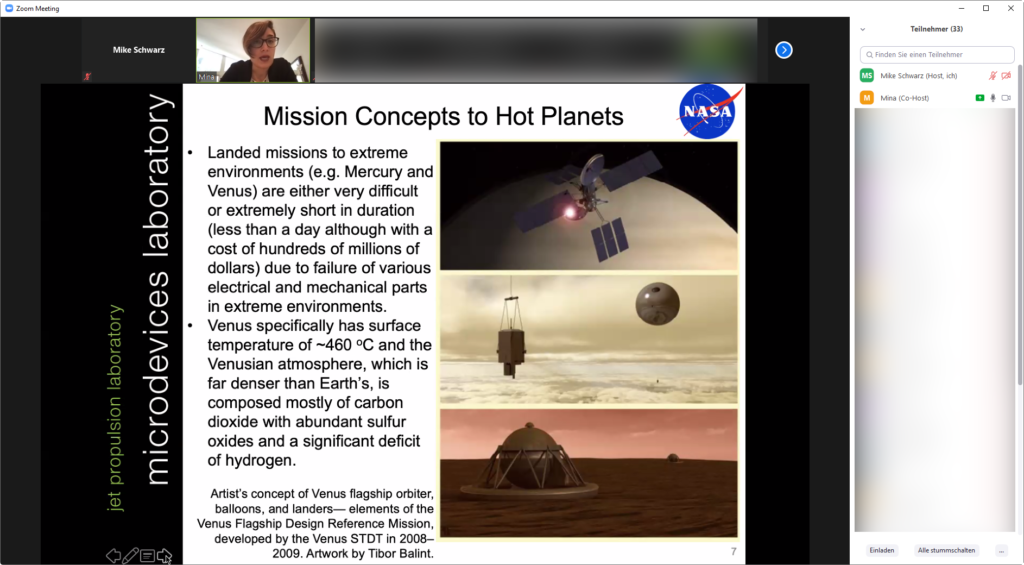Successful Mina Rais-Zadeh DL on Miniaturized Sensors for Space Applications
The distinguished lecture on “Miniaturized Sensors for Space Applications” was held on April 12, 2021. It was organized by the EDS Germany Chapter and co-sponsored by the NanoP from THM – University of Applied Sciences. The DL was attended by 14 IEEE participants and 22 non IEEE members.
The distinguished lecture of Dr. Rais-Zadeh from NASA JPL, California Institute of Technology, USA, started with an overview in various domains which are under investigation by JPL. The focus of the talk was set on advanced sensors and micromechanical systems.

The content of the DL had a scope on upcoming NASA missions to Venus and Mercury with their harsh environments, i.e. temperature, radiation, low and high pressures and atmosphere with its gaseous environment. Dr. Rais-Zadeh set the focus on the high costs and short mission time with all the challenges occurring during the development. The requirements of sensors are huge to avoid a fail of a mission. She offered various mission concepts for hot planets, especially for Venus with its requirements for a successful mission.
After the introduction and scope she went forward and presented GaN for MEMS Applications. An overview into the properties of the second most popular semiconductor was given, e.g. high mobility, strong piezoelectric properties enabling sensors and actuators, high power handling capability and many more. Focus on GaN for sensing applications in space followed by 2DEG devices with GaN with its extremely stable temperature properties. Furthermore, electromechanical properties in comparison to other semiconductors were presented.
Various applications as ovenized MEMS oscillators with a bench of examples and results followed. Afterwards, Dr. Rais-Zadeh switched the focus on GaN for sensing applications. Here, the focus was set on IR applications for Venus and the realization of piezo/pyro-electric resonant device based on GaN. A further example for hot IR detector was presented as well with its constraints on design of the device and the absorber for Venus. The last topic was related to diffraction gratings for planetary imaging spectrometers include visual and infrared mapping.
